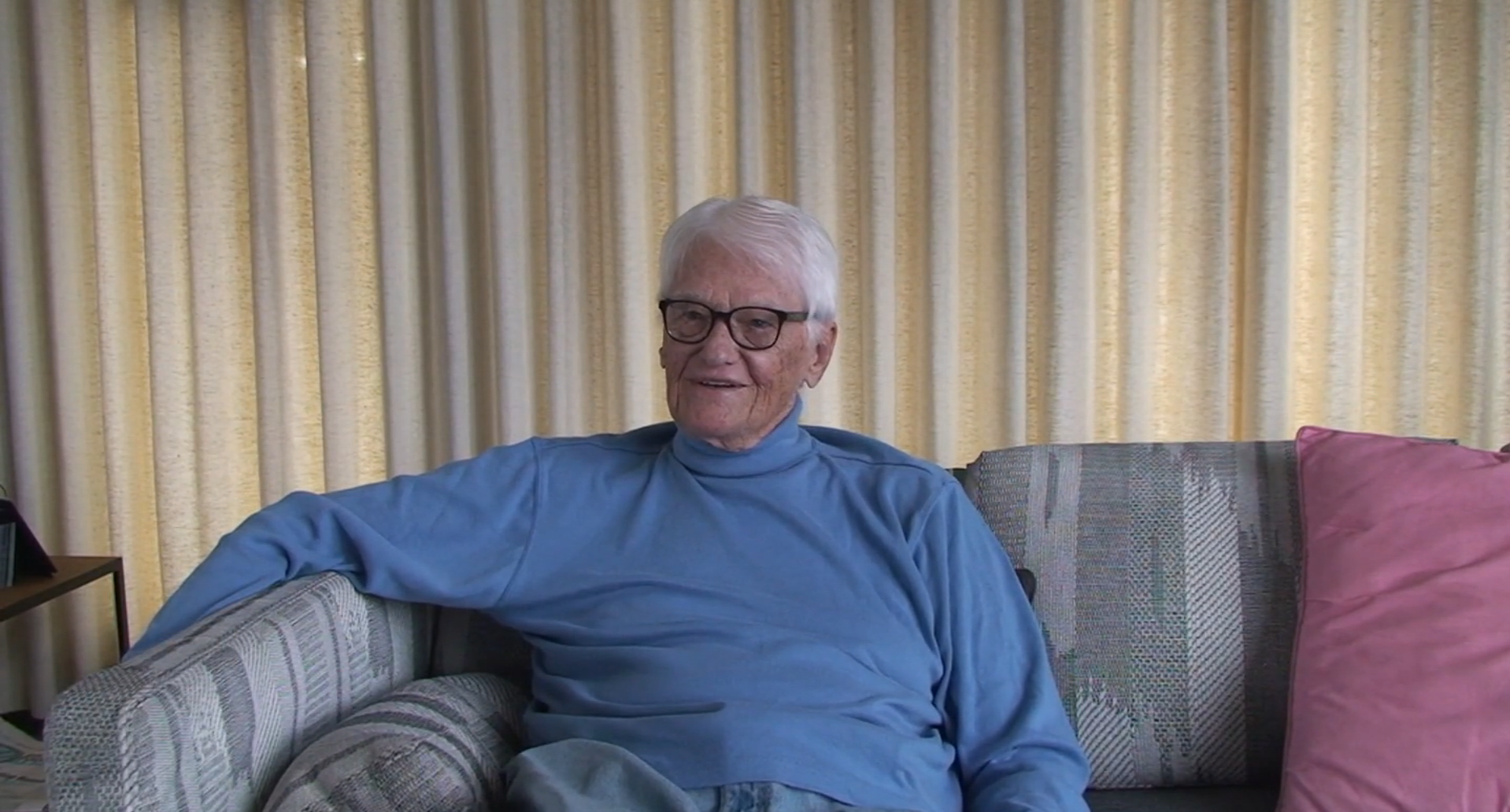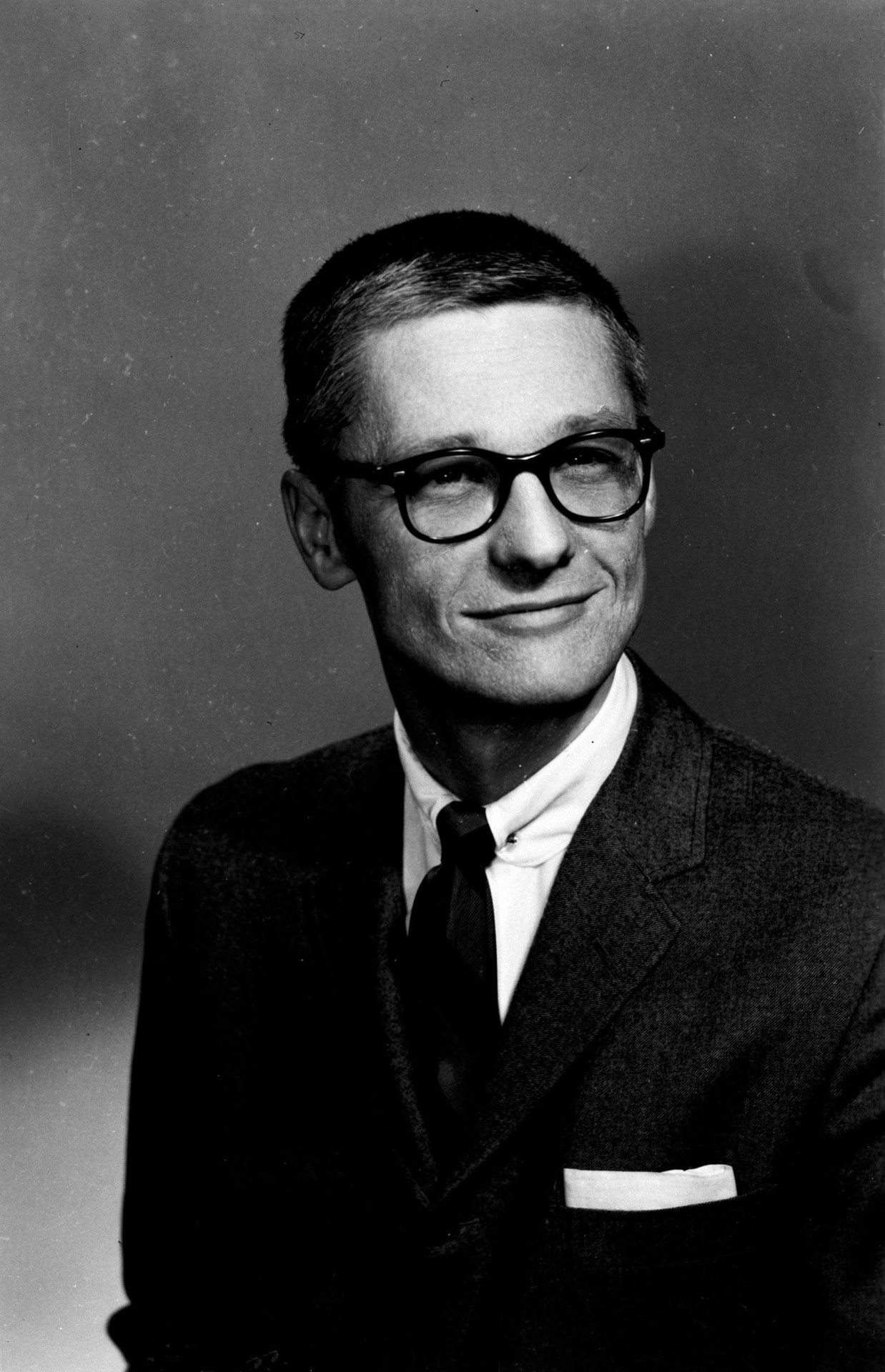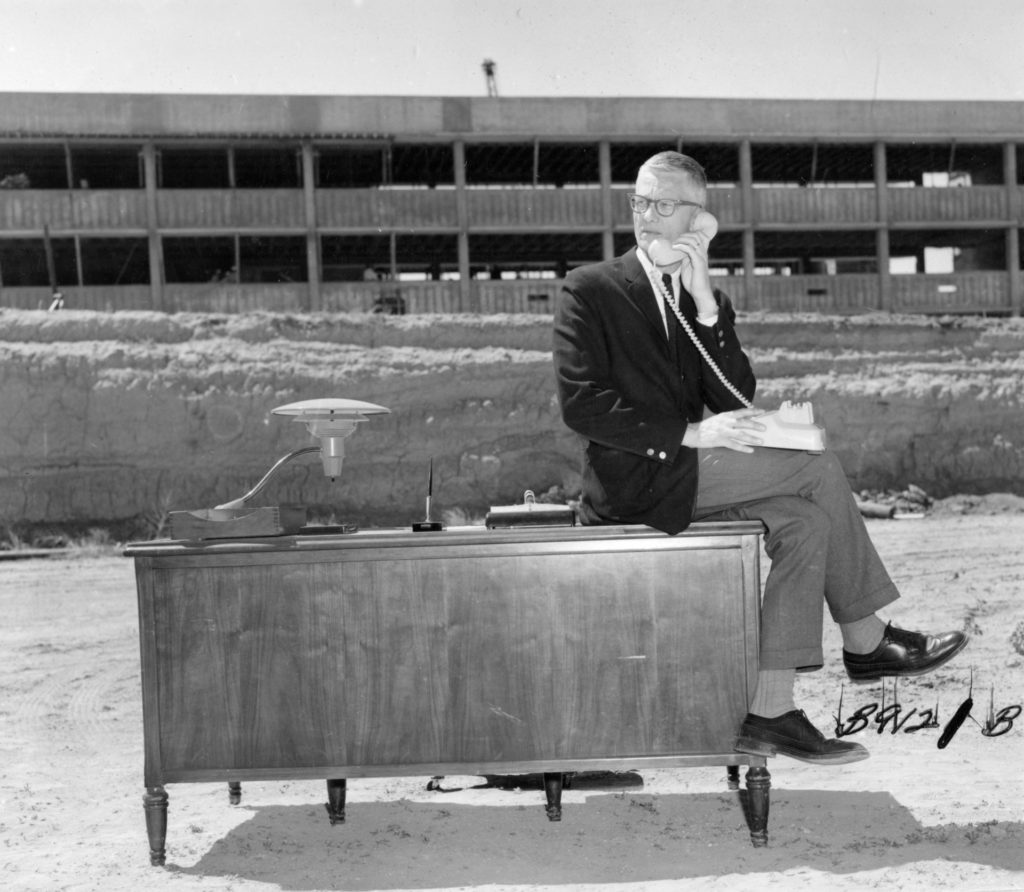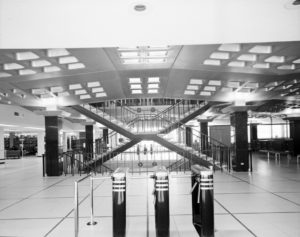
Lee Anderson was interviewed in 2016 as part of the University’s Senior Scholars Oral History Project, which conducted interviews with retired employees to capture their memories and stories.
LeMoyne “Lee” W. Anderson passed away on Feb. 18 at the age of 98. Anderson was the director of libraries at Colorado State University from 1957 to 1985.
Anderson was known for his shock of white hair and calm, dignified presence. Under his leadership, the CSU Libraries greatly expanded and refined its staff, collections, services and spaces to meet the needs of a world-class research university.
The design and construction of the Morgan Library in 1965 was a major achievement during his career.
Childhood and wartime memories
“I was born in the land of sky-blue waters in the Roaring Twenties,” Anderson said in a 2016 interview, describing his childhood in western Minnesota as “pedestrian.”
The son of a teacher in a long line of Lutheran clergy with Swedish roots, Anderson’s family impressed upon him the importance of college from a young age. His lifelong dedication to libraries and education left an indelible impact on CSU and the Fort Collins community.
Anderson was a college student in Minneapolis when he was drafted into the Army during World War II. He served in North Africa and Europe, earning two Purple Hearts and a Bronze Star. Later he recounted his wartime experience as part of the Northern Colorado Veterans Oral History Project. In 2017, he received the French Legion of Honor.
Returning home in 1945, Anderson resumed his studies with the support of the GI Bill. After earning bachelor’s degrees in library science and history, Anderson taught library science at Iowa State University and worked “in the trenches,” as he called it, in both technical and public service roles at libraries. In 1950, he married Hollis Pearson, also a librarian. They were married for 63 years until her death in 2013, and had two daughters.
He completed his master’s and doctorate degrees in library science at the University of Illinois Urbana Champaign. His dissertation was written on Fridays and Saturdays over two years while Anderson served as the director of libraries at CSU.

Lee Anderson was appointed director of libraries at CSU in 1957, when he was only 34 years old, and retired in 1985. He holds the record for the longest tenure of any library director at CSU.
Career at CSU Libraries: From a card to online catalog

Anderson at the construction site of the future Morgan Library, completed in 1965.
Anderson was 34 years old when he came to CSU as director of libraries in 1957. At just 5,200 students, CSU was on the cusp of a significant growth spurt during the booming 60s, and President William Morgan was under pressure from accrediting agencies to improve the library.
In Fort Collins, Anderson saw an opportunity to “inculcate in the community a sense of libraries and information sciences that didn’t exist here at the time.”
Anderson had one thought on his mind as he began his long tenure as director of libraries: expansion. staff, collections and spaces must all be expanded to meet the rapidly growing needs of Fort Collins’ burgeoning student and researcher populations.
From 1964 to 1965, Anderson led the consolidation of the main library on the Oval and five branch libraries into the new Morgan Library. He was deeply involved in the design and construction process, visiting libraries across the U.S. for inspiration and guidance and personally choosing furniture for the new building.
Under Anderson’s leadership, the CSU Libraries expanded its collection from 200,000 books and 50 staff in 1957 to more than 1.3 million books and more than 200 employees in 1985.
Staffing was of paramount concern to Anderson, and he earned the respect of his employees through his collected, cordial and courteous demeanor.
“We always felt we being fairly and professionally treated,” said Pat Smith, former CSU librarian.
She also noted that Anderson was responsible for librarians’ faculty status at CSU, enabling librarians to more fully contribute to the University’s direction and governance.

“He set the standard for service to the University and the profession,” remembers Thelma Joy Phelps, a former librarian. “I am forever grateful for the example he provided.”
“Dr. Anderson was more than just a manager. He had a true vision of the university library. He saw us from the card catalog through the online catalog,” added another former librarian.
Anderson oversaw three decades of technological advancements that would forever change the staffing, collections and service models at CSU Libraries, such as: mechanized punch cards, photocopiers, microprint, microfilm and television.
These advancements were an essential foundation for today’s digital age of information.
Anderson also played a role on the national stage of academic libraries, serving as president the Association of Research Libraries (ARL) and the Association of College Research Libraries (ACRL). These associations have been essential for the CSU Libraries to build regional support in collecting and sharing information.
One of his greatest experiences was travelling with a delegation from the State Department to China in 1979 to visit 14 universities and exchange professional knowledge with Chinese librarians.
Retirement and reflections
After retiring, Anderson remained actively engaged with his community. He worked as a volunteer for a program that prepared tax forms for people with low-incomes, and served on citizen boards for the Poudre School District and the Fort Collins Public Library. He was a member of the Trinity Lutheran Church and the Fort Collins Lions Club.
Most of all, he continued to read.
“Some people can just sit and stare into space,” he said. “I can’t do that. I’ve got to be doing something. I’ve got to be reading even if it’s reading catalogs that somebody sent me.”
In 2016, he reflected on the seemingly never-ending evolution of education and libraries at CSU, which appear almost unrecognizable today from the small land-grant college he met in 1957. He believed, however, that the role of the library at CSU today remains unchanged, saying: “It’s the heart of the university. It’ll never change.”